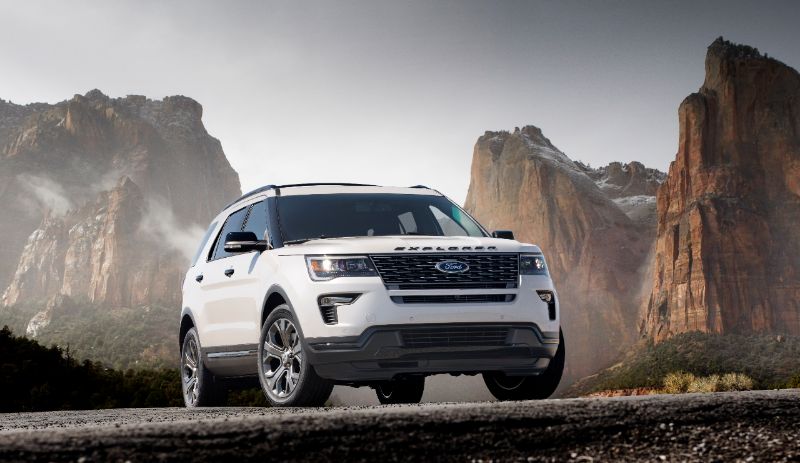Ford Explorer

2018 Ford Explorer Sport
The Ford Explorer has been one of the best-selling and the strongest sport utility vehicles since it began selling in the 1991 model year. We will be referring to the Explorer from 1991 to 2010. After 2010, the Explorer switched to a crossover platform where it was based off a unibody chassis based on a car platform. In fact, it’s the same one Ford is using for other vehicles like the Taurus and the Flex.
Before the switch to the crossover platform, the Explorer went with the traditional body on frame platform. While it wasn’t as comfortable, this traditional truck method of construction allowed it to handle the heavy shocks that come with driving on bumpy ground, off-road or on gravel roads. The body on the frame has been used since vehicles were invented and had plenty of strengths to compensate for the weakness of the comfort it provides on normal roads.
The Explorer wasn’t the biggest sports utility vehicle available, but that’s part of what made it so useful. It was an affordable option that allowed almost anyone to drive a strong SUV they could feel comfortable in. It was a perfect vehicle for small families or for younger thrill seekers.

Source: Shutterstock.com
Until the year 2002, the Explorer offered up the 2 and 3 door variant. The two-door sports utility vehicle has sort of gone extinct as the sports utility went from a fun vehicle to a child hauler. However, 2 door Explorers were popular and the Explorer Sports package was actually one of their best two door sales options.
The Explorer did have one moment in time when it looked like things weren’t going very well. There was a series of incidents in which the Explorer was rolling over and injuring people. While a lot of sport utility vehicles have rolled over the years, this was a problem for the Explorer. It wasn’t the Explorer’s fault in this case. The Explorer had been equipped with Firestone tires that turned out to be faulty. Firestone had to recall an immense amount of tires due to the issue.
